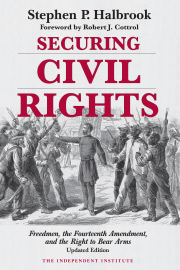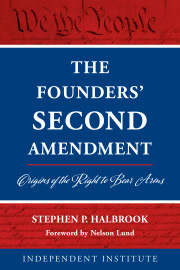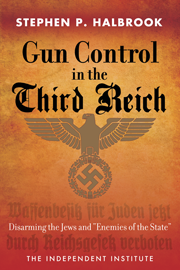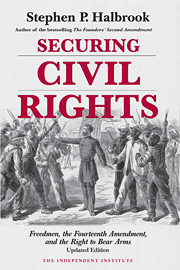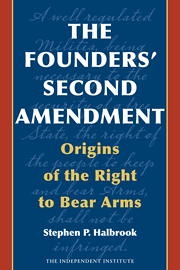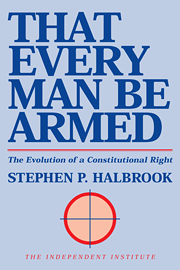Hundreds of news stories have been written during the past month reporting on the 100-year anniversary of one of the darkest events in world history, a two-year killing spree that claimed the lives of an estimated 800,000 to 1.5 million Armenians.
Virtually none of these news stories, however, bothered to mention why the Armenians were defenseless against their rulers in the then Ottoman Empire: because the Ottomans had disarmed them—the same tool that would enable the Nazis, two decades later, to enslave and then slaughter European Jewry.
While the remnant of the Ottoman Empire, today’s Turkey, disputes many of the details having to do with the Armenian genocide, most historians agree on certain basic facts. First, that the Christian Armenians had long been denied basic rights under the Ottomans’ Muslim law. Second, they were excluded from participation in the government. And third, Ottoman law made it a crime to possess a firearm without government permission. The Armenians, as British traveler H. F. B. Lynch wrote in 1901, were “rigorously prohibited from possessing firearms.”
After the Ottomans joined Germany in World War I—and a British invasion seemed imminent—the Turks decided to deport the Armenians, who they considered untrustworthy, to the interior. This deportation process became a death march, as thousands, and then tens of thousands, were murdered on their way to nowhere.
The 1915 deportation decree imposed the death penalty not only for armed resistance, but also for hiding or even helping someone else hide. The Ottomans also decreed that any firearms the Armenians possessed were to be surrendered to the government. Failing to do so, the decree said, “will be very severely punished when the arms are discovered.”
Ottoman authorities swept down on Armenian towns to search for guns. Villagers were tortured to induce confessions about hidden arms. Mass executions were ordered.
In Germany, the process started in a far more innocuous fashion. Political turmoil in the Weimar Republic between Communist and Nazi extremists led to the enactment of firearms restrictions requiring citizens to obtain government permission, under arbitrary standards, to obtain firearms. Of course, only law-abiding citizens bothered to do so.
At the end of 1931, firearm registration was imposed. And just over a year later, in 1933, Adolf Hitler seized power. The Nazis immediately used the registration records to disarm and crush the Social Democrats and other political opponents that they castigated as “enemies of the state.” The era of concentration camps had begun.
The Jews’ turn came in the fall of 1938, when the Nazis turned up the heat on the Jewish community, seizing economic assets and working to expel them from the country.
The seeds of the Holocaust were being planted. Police in Berlin and throughout Germany ordered all Jews to turn in their firearms. Thanks to registration records, they knew who they were. Many lined up at police stations to surrender their guns; those who didn’t had their houses ransacked and were arrested.
Once the Jews were disarmed, the trap was set. Kristallnacht, or the Night of the Broken Glass, erupted. Storm trooper thugs vandalized Jewish homes and stores and torched synagogues. Jews were beaten and murdered. Heinrich Himmler, head of the SS, decreed that gun possession by a Jew was punishable by 20 years in a concentration camp. Some 20,000 Jewish men were incarcerated.
Then war came, and by 1942 the “final solution of the Jewish question.” Jews were searched for arms one last time and then deported to the death camps. Six million were murdered.
The Armenian genocide and the Holocaust are not the only instances in which brutal despots have disarmed their victims and then murdered them.
Similar tactics were used in Stalin’s Russia, Idi Amin’s Uganda, and Pol Pot’s Cambodia.
Americans need to keep such events in mind the next time Washington seeks to limit gun ownership rights - or seeks to require gun registration. One cannot argue with history.



